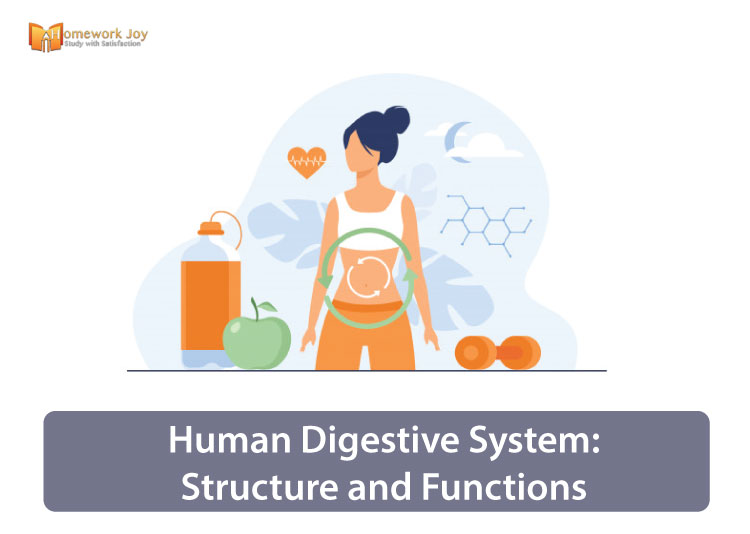The human digestive system is the means by which tissues and organs receive nutrients to function. It is a way to describe the digestive processes that take place at different levels in the body to prepare food eaten in the diet for absorption. In addition, the human digestive system breaks down food, extracts nutrients from it, and converts them into energy. The energy manufactures new cells, balances hormones and enzymes. Let’s see the structure of the human digestive system and how it works.
Structure of the Human Digestive System
The structure of the human digestive system begins from the mouth, passes through the abdomen and pelvis and ends at the anus. It is, therefore, a long tube through which food passes. The parts of the human digestive system are:
- Mouth
- Oesophagus
- Stomach
- Small intestine
- Pancreas
- Liver
- Gallbladder
- Large intestine
- Rectum
- Anus
Functions of the Human Digestive System
Let us see the functions of the human digestive system, and every part performs.
Mouth
Mouth helps in chewing and swallowing the food. Hence, the digestion starts here as soon as you take the first bite of a meal. Chewing breaks the food into pieces, while saliva mixes with food to begin the process of breaking it down into a form your body can absorb.
Esophagus
It is a tube that extends from the pharynx to the stomach. Muscular contractions within the oesophagus are called peristalsis to deliver food to your stomach. It acts as an important connection to the human digestive system through the thoracic cavity. Furthermore, it protects the heart and lungs. Food is later transported from the oral cavity into the pharynx then to the oesophagus below.
Stomach
It is a J- shape hollow organ that holds food while it is being mixed with stomach enzymes. When it leaves the stomach, food is transformed into a liquid or paste. Also, it provides defence against microbes which is provided by hydrochloric acid in gastric juice.
Small intestine
The small intestine contents start semi-solid and end in a liquid form after passing through the organ. Furthermore, the small intestine breaks down food by using enzymes released by the pancreas and bile from the liver. Bile is a component that aids in the digestion of fat and eliminates waste products from the blood. The small intestine is the part of the human digestive system, where 90% of the digestion process occurs. The rest 10% take place in the stomach and large intestine.
Pancreas
It secretes the enzymes that break down protein, fats, and carbohydrates. It makes insulin, passing it directly into the bloodstream. Insulin is an essential hormone in your body for metabolizing sugar. In particular, they are chemical messengers that travel through your blood. Diabetes and pancreatic cancer are common problems that affect the pancreas.
Liver
The liver performs various functions, but its main job within the digestive system is to process the nutrients absorbed from the small intestine. It also detoxifies harmful chemicals from the body. Therefore, it acts like the body’s chemical factory that the body needs to function.
Gallbladder
The gallbladder is a hollow structure located under the liver and on the right side of the abdomen. It stores the bile from the liver and releases it into the small intestine. So, the bile helps in breaking up the fats.
Large intestine
The large intestine helps in processing waste and emptying the bowel. It is a 6-foot long tube that connects the small intestine to the rectum. Normally, it takes about 36 hours for stool to get through the colon. Thus, the stool itself is food debris and bacteria. The “good” bacteria perform several functions, such as synthesizing various vitamins, processing waste products, food particles, and protecting against harmful bacteria.
Rectum
The rectum is an 8-inch chamber that joins the colon and anus. The rectum performs the job to receive stool from the colon and let you know that there is stool to be evacuated (pooped out) and to hold the stool until evacuation happens. When gas or stool comes into the rectum, sensors send a message to the brain. So, the brain decides if the rectal contents can be released or not.
Anus
The anus is encircled by sphincter muscles that are essential in allowing control of stool. The lining of the upper anus detects the rectal contents. It lets the human body know whether the contents are liquid, gas, or solid.
